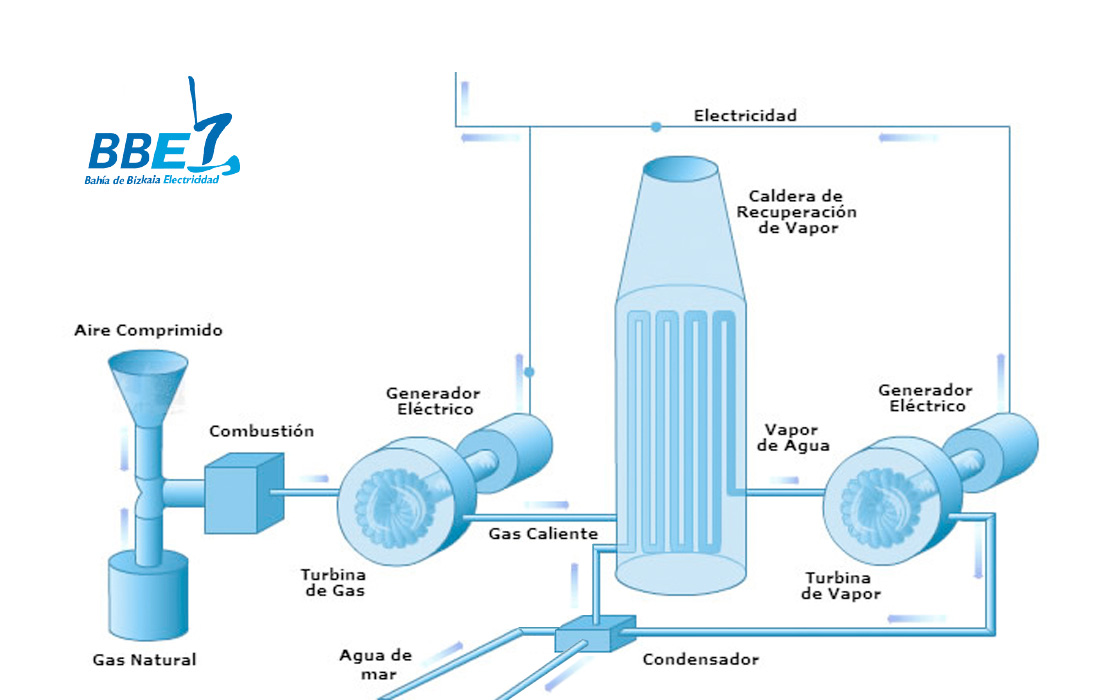
- A Combined Cycle Power Plant is based on a gas turbine and on the later use of residual heat through a steam cycle.
- A gas turbine operates by means of heating by combustion of the air compressed by a compressor, connected to the turbine itself (Brayton Cycle).
- When the gases in the turbine expand, a pressure is created which is converted into electrical power by the alternator.

The main fuel is usually natural gas. The gases that leave the gas turbine are at temperatures higher than 600°C. Their heat is used in a reheat boiler (waste heat boiler) to produce steam which, in turn, on being expanded in a steam turbine, causes a pressure which is also converted into electrical power (Rankine Cycle).
This combination of both cycles, by means of the gas turbine and the steam turbine, allows greater use to be made of the combustion heat, with an overall performance being achieved, in general, higher than 55%, whereas in conventional power stations about 35% is achieved.

